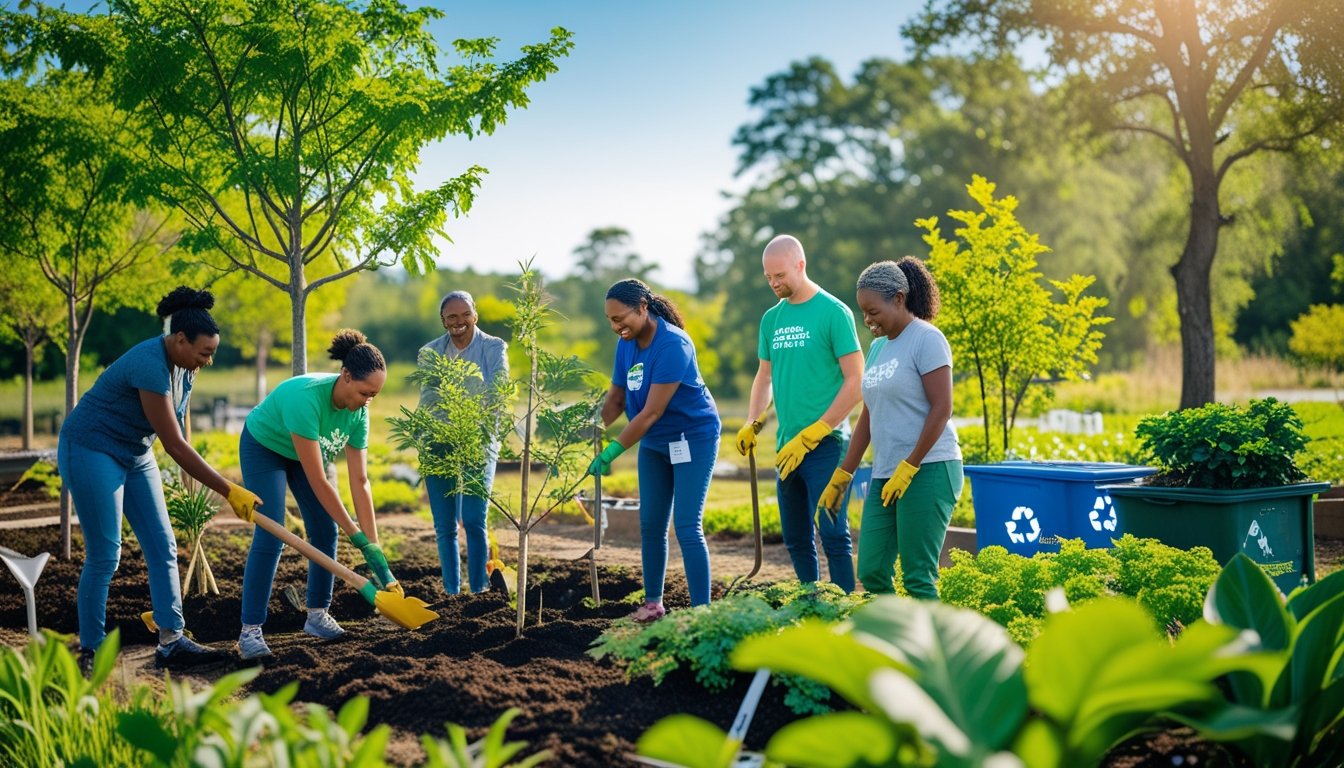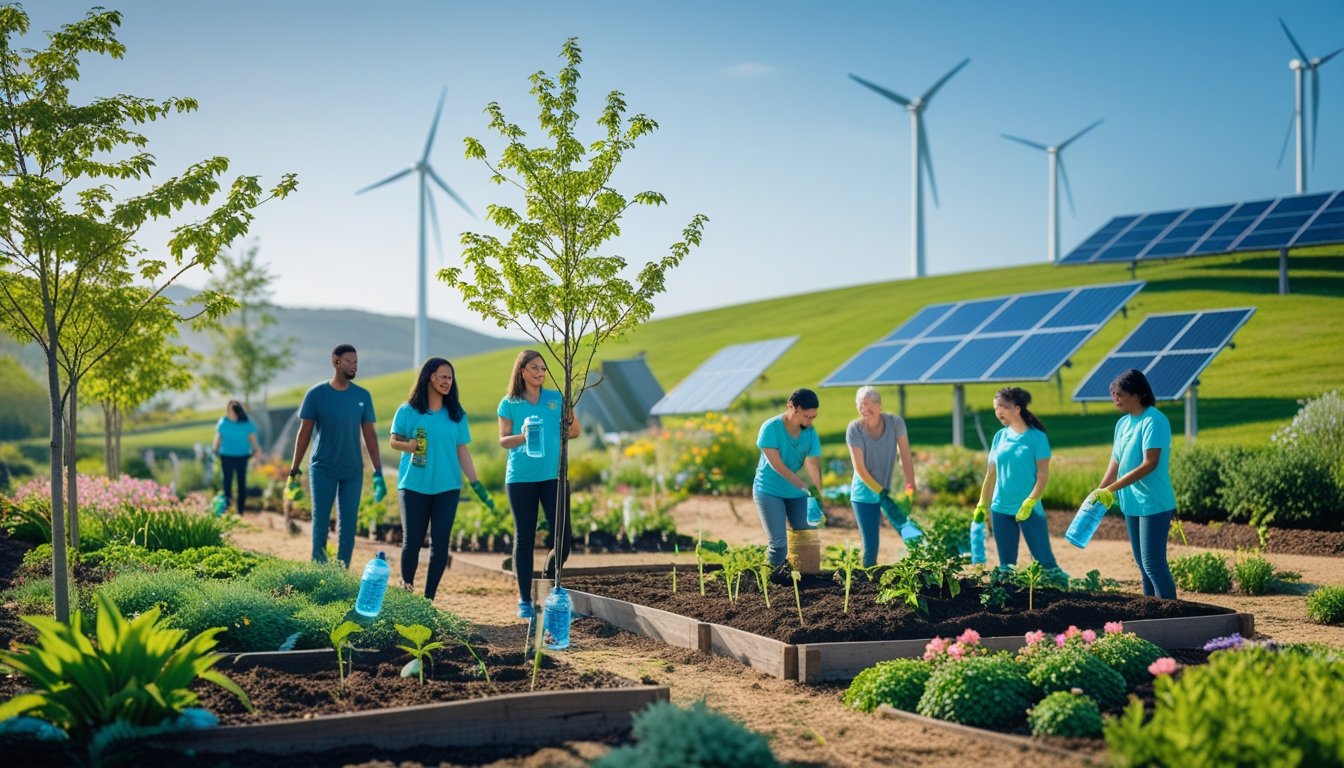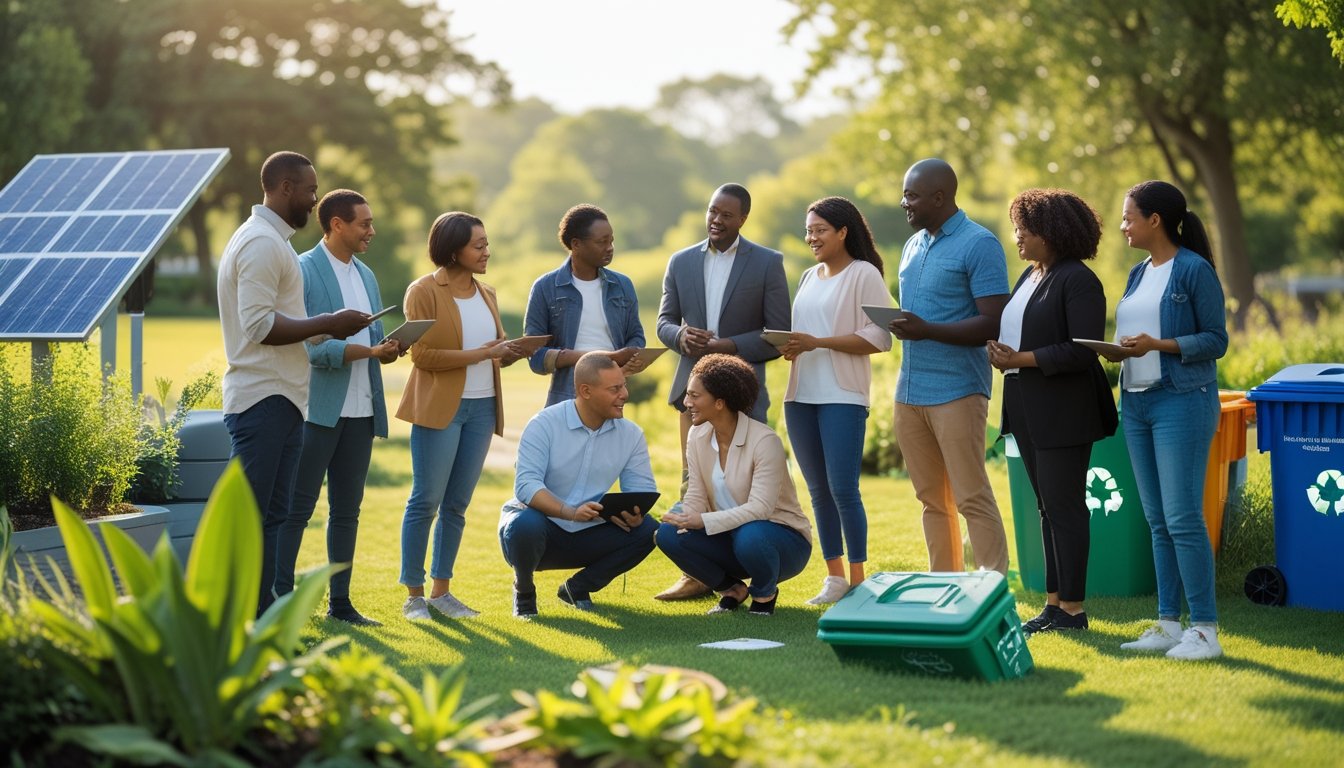Late updated: 29 May 2025 13:05
Written by: Ella Thompson
Exploring Eco-Friendly Practices in Recovery Journeys: Sustainable Steps Towards Wellness
Embarking on a recovery journey is a transformative experience that deserves thoughtful integration of eco-friendly practices. Incorporating these sustainable measures can significantly enhance both physical and mental well-being. As we explore the intersection of recovery and environmental mindfulness, it becomes evident how nature-based activities and eco-friendly products can play an invaluable role.

Our journey towards sustainable sobriety includes embracing practices that minimise waste and reduce the carbon footprint of recovery programmes. The shift towards eco-conscious living not only supports individuals in recovery but also fosters a community centred on health, healing, and environmental stewardship. By making informed choices, such as opting for nature-based activities and using sustainable products, recovery communities can cultivate a supportive and resilient system.
As we navigate this evolving landscape, it’s crucial to appreciate how these practices bolster motivation and reduce stress. The role of the environment in enhancing recovery cannot be overstated. By promoting activities like hiking or kayaking, we can lower stress levels and reinforce positive recovery outcomes. Through sustainable living, we're creating healthier, more supportive environments that pave the way for lasting sobriety.
Key Takeaways
- Eco-friendly practices enhance recovery and well-being.
- Sustainable living can reduce stress and support healing.
- Recovery communities thrive with nature-focused activities.
Core Eco-Friendly Practices in Recovery Journeys

As we explore eco-friendly practices in recovery, it's essential to address how sustainability can integrate into addiction recovery. Emphasising sustainable models, green healthcare initiatives, and personalised approaches with an environmental focus can significantly enhance recovery outcomes.
Sustainable Models for Addiction Recovery
Sustainable models in addiction recovery involve embedding eco-friendly practices into treatment programmes. By fostering community engagement, we encourage collective responsibility for both personal recovery and environmental stewardship.
Leveraging recovery capital, centres can deploy renewable energy sources and reduce waste through recycling and composting. Moreover, these models emphasise patient care rooted in mindfulness and sustainability. By crafting environments that nurture both individuals and the planet, we lay a foundation for sustainable healing journeys tailored to each person's needs.
Implementing Green Initiatives in Healthcare Settings
Green initiatives play a pivotal role in transforming healthcare settings into eco-conscious environments. By prioritising energy efficiency and waste reduction, facilities can substantially lower their environmental impact.
Encouraging the use of digital records over paper-based systems and implementing water-saving measures are key steps. Initiatives might include sustainable supply chains, focusing on eco-friendly materials, and local sourcing. By making these deliberate choices, healthcare providers support not only the planet but enhance the overall health of their patients, aligning environmental and recovery goals seamlessly.
Personalised Recovery Approaches with an Environmental Focus
Personalising recovery journeys with an environmental focus maximises individual engagement and enhances outcomes. Incorporating nature-based therapies allows patients to connect with green spaces, shown to reduce stress and substance use rates.
We can develop bespoke recovery plans that align individual preferences with eco-friendly practices, like outdoor group therapy and gardening. This connection fosters a deeper sense of purpose and reinforces sustainable living. Through these personal approaches, we not only aid recovery but also cultivate lifelong sustainable habits that benefit both individuals and communities.
Building Sustainable and Resilient Recovery Communities
To cultivate sustainable and resilient recovery communities, it’s essential that we engage in collaborative efforts, harness educational programmes, embrace innovative technologies, and promote circular economic models. These strategies are key in reducing environmental and carbon footprints, optimising resources, and fostering meaningful change in recovery environments.
Collaboration and Community Engagement for Environmental Impact
Collaboration is at the heart of building resilient recovery communities. By involving diverse stakeholders—such as businesses, non-profits, and local residents—we can create powerful networks that drive environmental change. Community engagement ensures that efforts are supported across different societal segments, enhancing social cohesion and collective action.
Engaging the community can include organising events that focus on climate change and sustainable living. These opportunities allow for shared learning and mobilisation towards common goals like carbon emissions reduction and renewable energy adoption. Additionally, establishing participatory platforms where individuals can contribute their ideas promotes a sense of ownership and commitment to eco-friendly practices.
Leveraging Education and Skills Development for Lasting Change
Education plays a vital role in equipping individuals with the knowledge and skills necessary for sustainable recovery. Through dedicated educational programmes, we can provide individuals with skills in renewable energy technologies, recycling techniques, and water conservation strategies. This not only benefits their personal recovery journey but also equips them to bring positive change to their communities.
Educational initiatives can involve workshops, training sessions, and partnerships with schools and universities. By focusing on practical skills development, individuals are better prepared to influence sustainable models in their communities. Investment in educational resources ensures the longevity and resilience of recovery communities by continuously fostering informed and empowered members.
Embracing Innovation and Technology for Resource Optimisation
Innovation and technology are crucial for optimising resources within recovery communities. Implementing energy-efficient systems, such as solar panels and LED lighting, helps in reducing energy consumption and reliance on non-renewable sources. Technology can also facilitate monitoring systems that track resource usage, enabling more informed decisions.
Visualising data through apps or digital dashboards can effectively communicate environmental progress to the community. Technological solutions, such as smart irrigation systems for water conservation, enhance resource efficiency. By investing in cutting-edge innovations, we not only improve resource management but also demonstrate commitment to greener practices, inspiring others to follow suit.
Monitoring Environmental Footprint and Promoting Circular Economies
Monitoring our environmental footprint is essential to understanding the impact of recovery practices on the planet. By regularly measuring carbon footprints and resource usage, we can identify areas for improvement and adapt strategies accordingly. This involves using metrics and tools that provide quantitative insights into environmental performance.
Promoting circular economy models within recovery communities encourages recycling programmes and the reuse of materials. By fostering a culture of resourcefulness, we minimise waste and lower costs associated with traditional linear economic models. Through industry collaborations and policy changes, sustained efforts towards a circular economy can lead to economic growth and more resilient communities.
Frequently Asked Questions

In our exploration of eco-friendly practices in recovery journeys, we address strategies for managing waste, incorporating sustainable food practices, and optimising green spaces. We'll delve into how renewable energy can be integrated into recovery centres and discuss effective water conservation methods.
What are the most effective eco-friendly strategies for managing waste in addiction recovery facilities?
Effective waste management in recovery facilities often involves recycling, composting, and reducing single-use plastics. To minimise waste, facilities can implement robust recycling programmes and opt for biodegradable and reusable materials wherever possible. Engaging staff and residents in waste reduction initiatives fosters a culture of environmental responsibility.
How can recovery programmes incorporate sustainable food practices that support both the environment and the healing process?
Incorporating sustainable food practices includes sourcing locally grown organic produce. Recovery programmes can establish community gardens, promoting hands-on involvement in growing food. This not only aids healing by fostering a sense of accomplishment but also reduces carbon footprints through local procurement and composting food waste.
What role does green space play in enhancing the wellbeing of individuals on their path to recovery, and how can it be optimised?
Green spaces provide essential opportunities for relaxation and reflection. Access to gardens or parks can improve mood and reduce stress, vital components of recovery. By integrating nature paths and meditation areas, recovery facilities can encourage outdoor activities that support physical and mental health.
In what ways can renewable energy sources be integrated into the infrastructure of recovery centres to promote sustainability?
Recovery centres can utilise solar panels and wind turbines to generate clean energy. These installations reduce reliance on fossil fuels, leading to significant environmental and cost benefits. Facilities can prioritise energy-efficient appliances and lighting, further reducing energy consumption and supporting sustainability goals.
How can water conservation methods be effectively employed in the context of recovery homes and addiction treatment centres?
Implementing water-saving fixtures like low-flow taps and toilets can drastically reduce water usage. Rainwater harvesting systems can be utilised for non-potable applications, such as irrigation. Through staff education and resident engagement, we can encourage mindful water use as part of daily routines.
What are the best practices for promoting environmental awareness and responsibility among individuals undergoing recovery?
Environmental workshops and educational programmes can be introduced to raise awareness. We can encourage participation in sustainability projects, fostering a sense of responsibility and connection to the environment. By integrating these practices into daily recovery activities, individuals gain valuable skills and insights into eco-friendly living.
